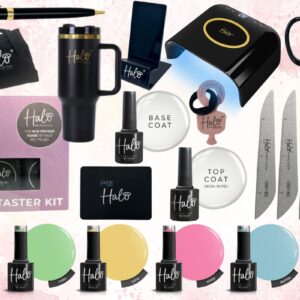
Social media engagement: Why it matters & how to increase it
By Guest Writer | 28 December 2023 | Expert Advice, Feature, Technology

Alicia Humphreys is owner of Pink Fox Salon Socials, which works with UK hair and beauty salon owners to grow their social media presences and help them attract new clients.
The company offers bespoke services in social media management, strategy and training. Here, Alicia shares social media engagement advice…

Social media engagement is based on more than the number of likes and comments on your posts. It’s about drawing people to your profiles and creating a dedicated client base.
Creating content is only one element of running successful social media pages. Carrying out regular engagement work will help you seek out and build closer relationships with followers and non-followers. It allows you to understand what they want and need from you. Plus, the algorithm loves engagement, so the more you engage, the more people will see your posts.
Types of engagement
There are two types of social media engagement that every business owner should be carrying out on a daily basis: reactive and proactive engagement.
What is reactive engagement?
You probably do this already, but reactive engagement is simply reacting to activity on your page. For example, answering DMs, liking comments and responding thoughtfully to them.
What do I mean by ‘thoughtfully’? I mean using comments to strike up a conversation. It can be tempting to respond with a simple “Thanks!” or “Glad you like it!” but this is not enough to keep the chat going. Use this opportunity to create a meaningful conversation, with the aim of this person either dropping into your DMs or booking an appointment with you.
For example:
Follower: “I love this nail design!”
You: “Thanks so much! I love creating this kind of design. Do you prefer nail art or just colour?”
See what I did there? The original commenter is then likely to respond, which not only boosts your engagement, but helps you build a relationship with a potential client.
What is proactive engagement?
Essentially, proactive engagement is you making the first move, instead of a follower, by reacting to others’ posts and stories and dropping into their DMs. I would recommend carrying out 5-10 minutes of proactive engagement a day. I tend to do mine while I’m waiting for the kettle to boil!

4 tips for successful proactive engagement
1. Only follow accounts of interest or clients/potential clients.
Then, spend some time liking and leaving comments on their posts. Focus on clients and potential clients only, as the reason you’re doing this is to attract them to your business. When you leave comments, make them meaningful. Just like with reactive comments, use this space to strike up a conversation.
For example:
You: “Your dog is so cute! Which breed is it?”
Them: “Thanks! He’s a Westie.”
You: “How cute! I was thinking of getting a dog myself. Would you recommend a Westie to someone who has kids?”
And so on. The point of this is to set you apart from other business owners. Also, the algorithm will pick up on this conversation and start pushing your content to this person.
2. Find and follow new people.
I recommend searching for a hashtag that potential clients may be using, for example #leicestermumblogger, then scrolling through posts with this tag. Follow anyone who you would like to be a future client, and like and comment on one of their posts, as above. I’d push this to two posts if you wanted, but any more and you may look spammy.
3. Engage with your ideal clients on other accounts.
This doesn’t mean heading to competitors’ social media pages and commenting on their posts, but you could try visiting a local business’ page, for example, a non-competitor like a florist, and leaving a comment on one of its most recent posts. Anyone commenting on this will see your comment, and most likely have a stalk of your page (we’ve all done it!) This is a great way to widen your reach across your local area.
4. Get involved in conversations.
For example, if someone has asked a question about nailcare on a local Facebook page, give them the advice they’re looking for. Some people will post a business link and leave (a pet peeve of mine!) Instead, start your comment with “Local nail tech here. My advice is…” Others commenting will then know you’re a nail tech, check out your profile and find your business links. I don’t recommend visiting competitors’ pages to leave comments or follow lots of their followers.
Be consistent with your engagement
Being consistent with your engagement will make a huge difference to the success of your social media pages, so factor this work into your daily routine and don’t feel like you have to overdo it.

Read the latest issue









